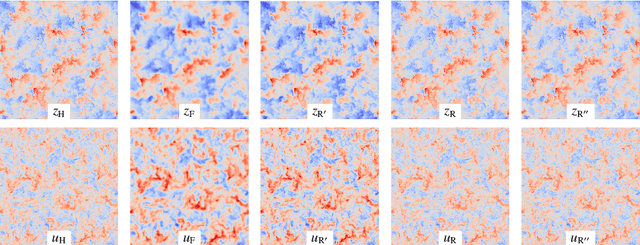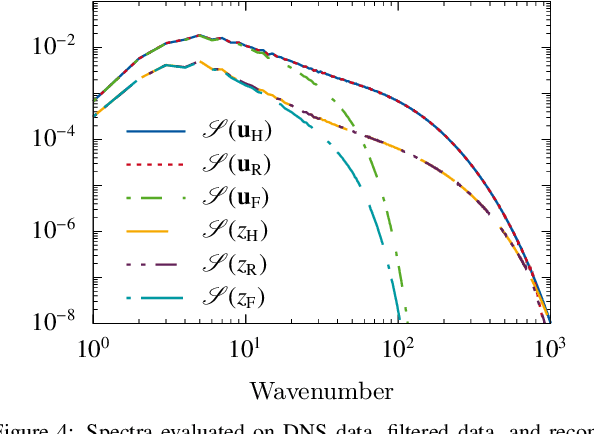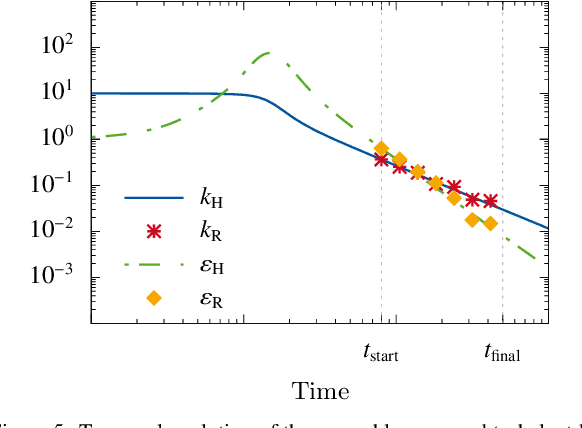Dominik Denker
Using Physics-Informed Super-Resolution Generative Adversarial Networks for Subgrid Modeling in Turbulent Reactive Flows
Nov 26, 2019



Abstract:Turbulence is still one of the main challenges for accurately predicting reactive flows. Therefore, the development of new turbulence closures which can be applied to combustion problems is essential. Data-driven modeling has become very popular in many fields over the last years as large, often extensively labeled, datasets became available and training of large neural networks became possible on GPUs speeding up the learning process tremendously. However, the successful application of deep neural networks in fluid dynamics, for example for subgrid modeling in the context of large-eddy simulations (LESs), is still challenging. Reasons for this are the large amount of degrees of freedom in realistic flows, the high requirements with respect to accuracy and error robustness, as well as open questions, such as the generalization capability of trained neural networks in such high-dimensional, physics-constrained scenarios. This work presents a novel subgrid modeling approach based on a generative adversarial network (GAN), which is trained with unsupervised deep learning (DL) using adversarial and physics-informed losses. A two-step training method is used to improve the generalization capability, especially extrapolation, of the network. The novel approach gives good results in a priori as well as a posteriori tests with decaying turbulence including turbulent mixing. The applicability of the network in complex combustion scenarios is furthermore discussed by employing it to a reactive LES of the Spray A case defined by the Engine Combustion Network (ECN).
 Add to Chrome
Add to Chrome Add to Firefox
Add to Firefox Add to Edge
Add to Edge